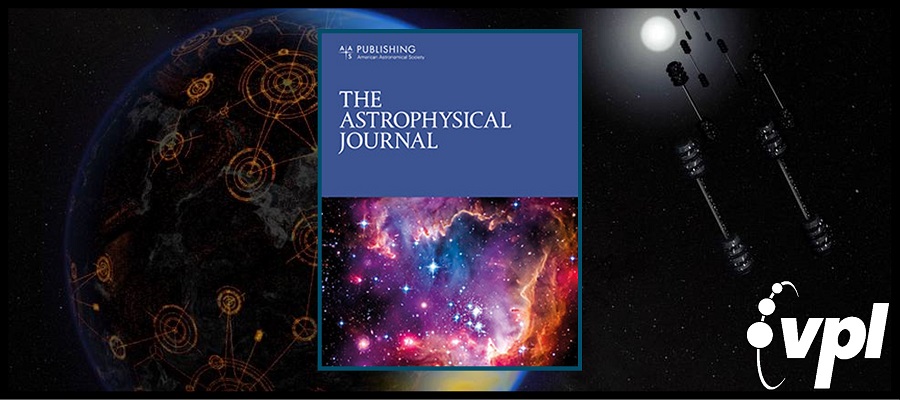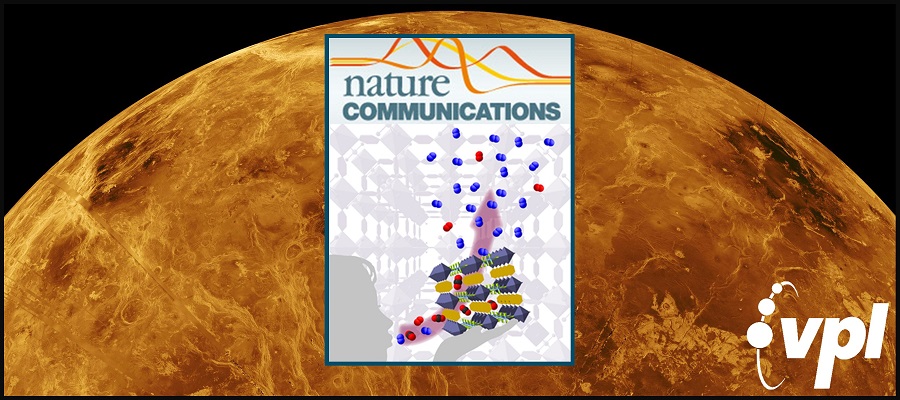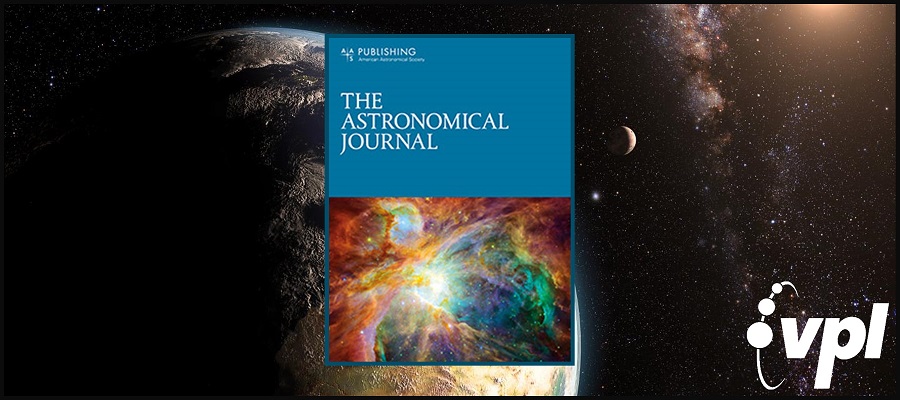The observation of a 266.94 GHz feature in the Venus spectrum has been attributed to phosphine (PH3) in the Venus clouds, suggesting unexpected geological, chemical, or even biological processes. Since both PH3 and sulfur dioxide (SO2) are spectrally active near 266.94 GHz, the contribution to this line from SO2 must be determined before it can be attributed, in whole or part, to PH3. An undetected SO2 reference line, interpreted as an unexpectedly low SO2 abundance, suggested that the 266.94 GHz feature could be attributed primarily to PH3. However, the low SO2 and the inference that PH3 was in the cloud deck posed an apparent contradiction. Here we use a radiative transfer model to analyze the PH3 discovery, and explore the detectability of different vertical distributions of PH3 and SO2. We find that the 266.94 GHz line does not originate in the clouds, but above 80 km in the Venus mesosphere. This level of line formation is inconsistent with chemical modeling that assumes generation of PH3 in the Venus clouds. Given the extremely short chemical lifetime of PH3 in the Venus mesosphere, an implausibly high source flux would be needed to maintain the observed value of 20 ± 10 ppb. We find that typical Venus SO2 vertical distributions and abundances fit the JCMT 266.94 GHz feature, and the resulting SO2 reference line at 267.54 GHz would have remained undetectable in the ALMA data due to line dilution. We conclude that nominal mesospheric SO2 is a more plausible explanation for the JCMT and ALMA data than PH3.
The evolution of a single raindrop falling below a cloud is governed by fluid dynamics and thermodynamics fundamentally transferable to planetary atmospheres beyond modern Earth’s. Here, we show how three properties that characterize falling raindrops — raindrop shape, terminal velocity, and evaporation rate — can be calculated as a function of raindrop size in any planetary atmosphere. We demonstrate that these simple, interrelated characteristics tightly bound the possible size range of raindrops in a given atmosphere, independently of poorly understood growth mechanisms. Starting from the equations governing raindrop falling and evaporation, we demonstrate that raindrop ability to vertically transport latent heat and condensible mass can be well captured by a new dimensionless number. Our results have implications for precipitation efficiency, convective storm dynamics, and rainfall rates, which are properties of interest for understanding planetary radiative balance and (in the case of terrestrial planets) rainfall-driven surface erosion.
Point-source spectrophotometric (single-point) light curves of Earth-like planets contain a surprising amount of information about the spatial features of those worlds. Spatially resolving these light curves is important for assessing time-varying surface features and the existence of an atmosphere, which in turn is critical to life on Earth and significant for determining habitability on exoplanets. Given that Earth is the only celestial body confirmed to harbor life, treating it as a proxy exoplanet by analyzing time-resolved spectral images provides a benchmark in the search for habitable exoplanets. The Earth Polychromatic Imaging Camera (EPIC) on the Deep Space Climate Observatory (DSCOVR) provides such an opportunity, with observations of ~5000 full-disk sunlit Earth images each year at 10 wavelengths with high temporal frequency. We disk-integrate these spectral images to create single-point light curves and decompose them into principal components (PCs). Using machine-learning techniques to relate the PCs to six preselected spatial features, we find that the first and fourth PCs of the single-point light curves, contributing ~83.23% of the light-curve variability, contain information about low and high clouds, respectively. Surface information relevant to the contrast between land and ocean reflectance is contained in the second PC, while individual land subtypes are not easily distinguishable (<0.1% total light-curve variation). We build an Earth model by systematically altering the spatial features to derive causal relationships to the PCs. This model can serve as a baseline for analyzing Earth-like exoplanets and guide wavelength selection and sampling strategies for future observations.
Variation in the balance of forces that drive and resist tectonic plate motions allows small terrestrial planet to cooler slower than larger ones. Given that interior cooling affects surface environment, through volcanic/geologic activity, this indicates that small planets should not be down-weighted in the search for life beyond Earth.
Recently published Atacama Large Millimeter Array (ALMA) observations suggest the presence of 20 ppb PH3 in the upper clouds of Venus. This is an unexpected result, as PH3 does not have a readily apparent source and should be rapidly photochemically destroyed according to our current understanding of Venus atmospheric chemistry. While the reported PH3 spectral line at 266.94 GHz is nearly colocated with an SO2 spectral line, the nondetection of stronger SO2 lines in the wideband ALMA data is used to rule out SO2 as the origin of the feature. We present a reassessment of wideband and narrowband data sets derived from these ALMA observations. The ALMA observations are re-reduced following both the initial and revised calibration procedures discussed by the authors of the original study. We also investigate the phenomenon of apparent spectral line dilution over varying spatial scales resulting from the ALMA antenna configuration. A 266.94 GHz spectral feature is apparent in the narrowband data using the initial calibration procedures, but this same feature cannot be identified following calibration revisions. The feature is also not reproduced in the wideband data. While the SO2 spectral line is not observed at 257.54 GHz in the ALMA wideband data, our dilution simulations suggest that SO2 abundances greater than the previously suggested 10 ppb limit would also not be detected by ALMA. Additional millimeter, submillimeter, and infrared observations of Venus should be undertaken to further investigate the possibility of PH3 in the Venus atmosphere.
In the field of astrobiology, the precise location, prevalence, and age of potential extraterrestrial intelligence (ETI) have not been explicitly explored. Here, we address these inquiries using an empirical galactic simulation model to analyze the spatialtemporal variations and the prevalence of potential ETI within the Galaxy. This model estimates the occurrence of ETI, providing guidance on where to look for intelligent life in the Search for ETI (SETI) with a set of criteria, including well-established astrophysical properties of the Milky Way. Further, typically overlooked factors such as the process of abiogenesis, different evolutionary timescales, and potential self-annihilation are incorporated to explore the growth propensity of ETI. We examine three major parameters: (1) the likelihood rate of abiogenesis (?A); (2) evolutionary timescales (Tevo); and (3) probability of self-annihilation of complex life (Pann). We found Pann to be the most influential parameter determining the quantity and age of galactic intelligent life. Our model simulation also identified a peak location for ETI at an annular region approximately 4 kpc from the galactic center around 8 billion years (Gyrs), with complex life decreasing temporally and spatially from the peak point, asserting a high likelihood of intelligent life in the galactic inner disk. The simulated age distributions also suggest that most of the intelligent life in our galaxy are young, thus making observation or detection difficult. View Full-Text
The abundance of SO dimers (SO)2 in the upper atmosphere of Venus and their implications for the enigmatic ultraviolet absorption has been investigated in several studies over the past few years. However, the photochemistry of sulfur species in the upper atmosphere of Venus is still not well understood and the identity of the missing ultraviolet absorber(s) remains unknown. Here we update an existing photochemical model of Venus’ upper atmosphere by including the photochemistry of SO dimers. Although the spectral absorption profile of SO dimers fits the unknown absorber, their abundance is found to be too low for them to contribute significantly to the absorption. It is more likely that their photolysis and/or reaction products could contribute more substantively. Reactions of SO dimers are found to be important sources of S2O, and possibly higher order SnO species and polysulfur, Sn. All of these species absorb in the critical ultraviolet region and are expected to be found in both the aerosol and gas phase. indicating that in-situ high resolution aerosol mass spectrometry might be a useful technique for identifying the ultraviolet absorber on Venus.
Point source spectrophotometric (“single-point”) light curves of Earth-like planets contain a surprising amount of information about the spatial features of those worlds. Spatially resolving these light curves is important for assessing time-varying surface features and the existence of an atmosphere, which in turn is critical to life on Earth and significant for determining habitability on exoplanets. Given that Earth is the only celestial body confirmed to harbor life, treating it as a proxy exoplanet by analyzing time-resolved spectral images provides a benchmark in the search for habitable exoplanets. The Earth Polychromatic Imaging Camera (EPIC) on the Deep Space Climate Observatory (DSCOVR) provides such an opportunity, with observations of ~5000 full-disk sunlit Earth images each year at ten wavelengths with high temporal frequency. We disk-integrate these spectral images to create single-point light curves and decompose them into principal components (PCs). Using machine learning techniques to relate the PCs to six preselected spatial features, we find that the first and fourth PCs of the single-point light curves, contributing ~83.23% of the light curve variability, contain information about low and high clouds, respectively. Surface information relevant to the contrast between land and ocean reflectance is contained in the second PC, while individual land sub-types are not easily distinguishable (<0.1% total light curve variation). We build an Earth model by systematically altering the spatial features to derive causal relationships to the PCs. This model can serve as a baseline for analyzing Earth-like exoplanets and guide wavelength selection and sampling strategies for future observations.


